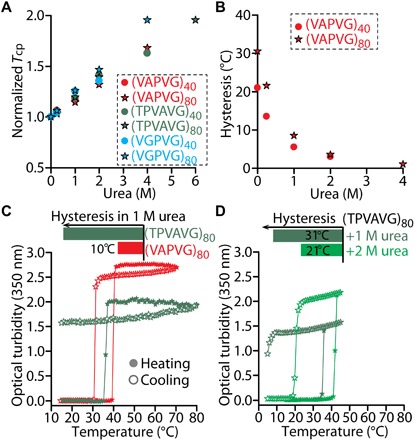Fig. 3. A protein denaturant modulates the hysteretic phase behavior of LCST IDPPs.

(A) Cloud point temperatures as a function of increasing concentrations of a protein denaturant (urea) in PBS for IDPPs with negligible—(VPGVG)40 and (VPGVG)80; see fig. S5—moderate—(VAPVG)40 and (VAPVG)80—and large—(TPVAVG)40, (TPVAVG)80, (VGPVG)40, and (VGPVG)80—hysteresis. Values were normalized to Tcp in PBS without urea. To overcome the overlapping of normalized Tcp’s, these data are also presented as separate panels in fig. S5. (B) Degree of thermal hysteresis for IDPPs made of VAPVG repeats at a fixed concentration of 50 μM in PBS supplemented with increasing amounts of urea. (C) Temperature-dependent optical turbidity data in PBS + 1 M urea for two IDPPs with identical repeat number but different repeat motifs that encode widely different hysteretic behaviors. Even in 4 M urea, 40-mer IDPPs of TPVAVG repeats display pronounced hysteretic behavior (fig. S5). (D) Phase behavior data as in (C), in PBS with 1 or 2 M urea, but exclusively for (TPVAVG)80 and when the phase transition is triggered without exceeding 45°C during the heating cycle. All relevant Tcp values were calculated from optical turbidity data at a concentration of 50 μM in PBS or PBS supplemented with urea as indicated.
